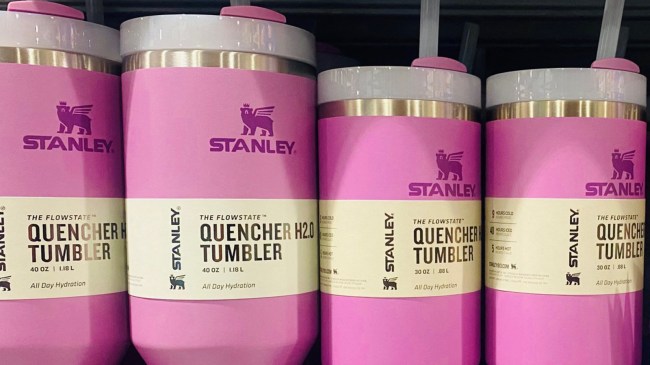Getty Image
It’s been impossible to ignore the mania surrounding the uber-popular Stanley cups that have taken the world by storm in recent months, but most people who’ve hopped aboard that bandwagon are probably unaware of a potential danger that’s lurking inside of them.
The words “Stanley Cup” have historically been associated with hockey’s ultimate prize, and NHL players are known for going to great lengths for the chance to get their hands on it. However, a different kind of Stanley cup has inspired regular people to resort to some similarly desperate tactics to secure one for themselves.
At first glance, there’s nothing particularly remarkable about the insulated “Quencher ” tumblers Stanley (a company with a history stretching back to 1913) has been pumping out since 2016. However, the 40-ounce insulated cups have recently become the ultimate status symbol and have subsequently sparked a borderline hysteria.
Earlier this week, a woman in California was arrested for allegedly stealing 65 Stanley cups valued at $2,500 that were discovered in her car, and last month, the release of some limited-edition pink ones made for a collaboration between Target and Starbucks sparked some scenes typically reserved for Black Friday.
Now, some advocates are alerting consumers to the toxic substance lurking inside Stanley cups in the form of the pellets of lead that every single one of them contains.
According to NBC News, Stanley recently confirmed it harnesses lead in the manufacturing process after some advocates began to alert consumers of its presence on social media. However, it stressed there’s a very slim chance anyone who uses them as intended runs the risk of being exposed.
The producer said the lead pellets (which are used for insulation purposes) are sandwiched between the exterior of the cup and the stainless steel vessel that contains the liquid. It would be impossible for the contents to be contaminated unless the steel was punctured, which means the only real risk stems from drinking directly from the cup if the interior becomes dislodged from the casing.
Stanley told the outlet that’s a “rare” occurrence but notes its products are protected by a lifetime warranty in the event it does happen. The vast majority of Stanley cup owners will probably never have to worry about the issue, but it’s never going to hurt to be aware.

